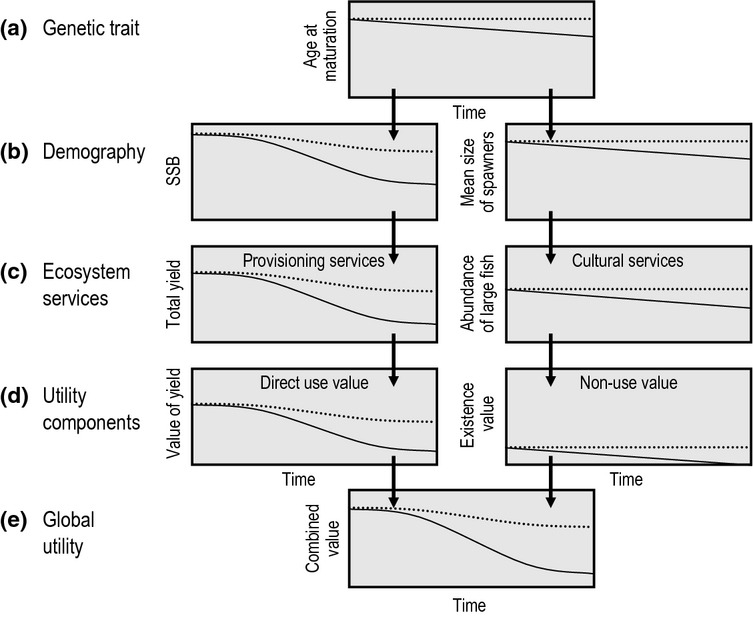Figure 3.

Schematic illustration of a hypothetical retrospective evolutionary impact assessment aiming to quantify the consequences of past fisheries-induced evolution (FIE) from the genetic trait to a global utility function. All curves, therefore, show effects of changes in the genetic component of the trait in question. The assessment compares time series of quantities of interest from an evolutionary scenario (continuous lines) with those from a non-evolutionary scenario (dashed lines) given a particular fishing regime. (a) This example focuses on FIE in a stock's average age at maturation and assumes that FIE causes fish to mature at earlier ages and smaller sizes. (b) In the evolutionary scenario, fishing results in more rapid decreases in spawning-stock biomass (SSB) and in the average body size of spawners. (c) This will influence ecosystem services: provisioning services decline because of a more strongly reduced yield, and cultural services decline, for example, because of the loss of desirable large fish. (d) This implies secondary effects on the associated socioeconomic values or utility components: direct-use values are diminished because of a less valuable total yield, and non-use values are diminished because of the loss of existence value. (e) The loss of values from provisioning and cultural services can be assessed jointly, in terms of a global utility function, which is found to decline more strongly as a result of FIE. Note that although FIE may often lead to earlier maturation at smaller sizes, as shown in this example, under particular circumstances, it may result in delayed maturation.
